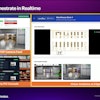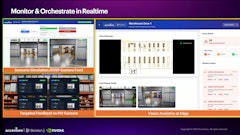
Avetta announced significant enhancements to the safety manual audit capabilities available within its Avetta One platform.
“We’re committed to constantly delivering new, powerful product capabilities that help our customers go beyond compliance and build truly safe, secure and sustainable supply chains,” says Dawn Andre, chief product officer at Avetta. “We've designed these new dashboards and insights to provide instant depth of visibility into the individual safety programs being audited—including their status, presence of risk and time to completion—rather than just a binary pass/fail outcome. This empowers hiring clients with stronger intelligence to identify specific safety risks in their supply chains earlier. We’re enabling the opportunity for our clients to take decisive action proactively and drive stronger safety outcomes across the board.”
Key takeaways:
· Avetta’s safety manual audits are comprehensive, expert evaluations of contractors’ and suppliers’ safety policies and procedures to identify gaps that could create substantial risk for hiring clients.
· Now, optimizations to the Client View dashboard and a new analytics tool called Audit Insights help hiring clients maximize the value of these audits by providing greater transparency into the audit performance of individual contractors and suppliers as well as identifying and analyzing audit trends across contractor and supplier networks, respectively.
· Optimizations to the Client View experience provide detailed insights into the who, when and why of individual audits. They highlight where a contractor or supplier encountered challenges in the audit process, identify critical safety risks associated with rejected topics and provide a comparative analysis of contractor and supplier audit completion times.
· Audit Insights provides analytics that enable easy identification and analysis of audit trends across entire contractor and supplier networks. It allows health and safety officers, site operations managers, project managers and procurement managers to track open audits, analyze rejection patterns and identify areas requiring additional training or corrective actions.




















